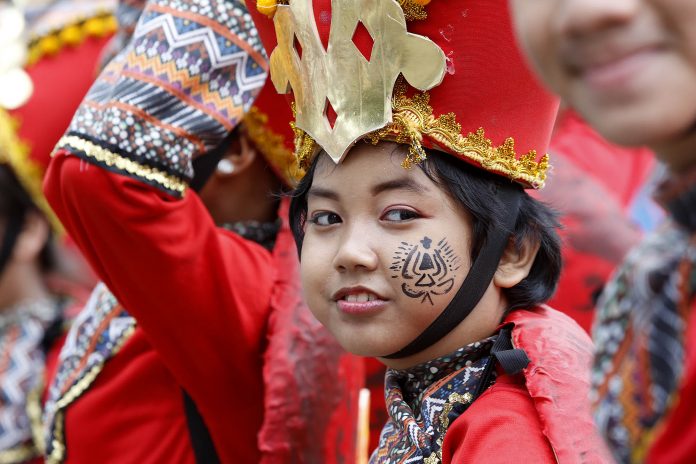On a wooden altar inside a small shoe repair shop in Manila’s Tondo district sits an old image of the Child Jesus, or Santo Niño, dressed in a simple plain cloth.
Theresa Rodring, 60, says the grubby image is the reason why the shop is still open.
“The Santo Niño brings in clients everyday,” says Rodring. “He’s been here for more than two decades and never let us empty handed,” she adds.
Like Rodring, Jon-jon Calala, a 36-year old electronic repairman, claims that the image of the Child Jesus gives him luck and attracts costumers.
“Since I put him on that altar, we never had a lousy day,” says Calala, pointing at his image in the middle of a pile of old television sets, electric fans, and radios.
A reminder of God’s presence
“Sometimes, Filipino Catholics overdo their practice of their faith,” says Father Ambrosio Nonato Legaspi of the Diocese of Novaliches in Manila.
“Oftentimes, our devotion becomes an obsession and we make ourselves believe that religious icons are God Himself,” says the priest.
Legaspi says Filipinos “tend to humanize religious images without understanding its meaning.”
“It is one reason why Filipino devotion is misunderstood by visitors as fanaticism,” he adds.
Sociologist Jayeel Serano Cornelio, however, says Filipino religious practices are forms of “authentic religiosity.”
“People believe that God lives on these images because they experienced and saw Him in these icons,” says Cornelio, a sociologist of religion at the Jesuit-run Ateneo de Manila University.
“We may call it popular religiosity, but the mere fact that people are converging to give praise or worship God because of these images, they are practicing religion, and there is no false practice of faith because they believe in the same God,” he adds.

Fashion of the Child Jesus
In a street corner of Manila’s Quiapo district, 66-year old Rina Mananzan attends to her stall displaying images of the Child Jesus in various sizes and dressed in various costumes.
A firefighter Child Jesus stands beside a police Santo Niño. Almost all professions — from farmer to doctor to student — are represented.
“People buy clothes for their statues even during ordinary days,” says Mananzan. “The buy costumes for their image as if they’re buying clothes for their children.”
“People want to feel that God is with them in their everyday lives,” says Father Legaspi. “We want Him near us,” he adds.
The priest says Filipinos want God “to be in what they do or what they live for.” He says the Child Jesus is a reminder that “God is so humble to become human and be one with our own struggles.”
“He elevated our humanity and decided to come among us as man,” says Father Legaspi.
The image of the Child Jesus known as the Santo Niño, is supposedly a gift of Portuguese explorer Ferdinand Magellan to the queen of the island of Cebu during her baptism as a Catholic in 1521.
The Child Jesus is no doubt the most famous child in the Philippines with his image prominently displayed in all possible places, including offices, vehicles, and even night clubs and girlie bars.
The weeklong celebration of the “Sinulog,” the oldest festival in the country, starts every third Sunday of January with colorful parades, fluvial processions, street dancing, and other festive rites.
The pandemic, however, makes the celebrations a thing of the past.









